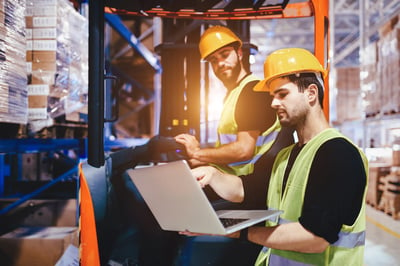 We recently held a webinar on taking the risk out of new technology. (PS - We will do it again soon!)
We recently held a webinar on taking the risk out of new technology. (PS - We will do it again soon!)
The focus of the discussion was around the excitement our Application Engineering and Product Innovation teams have for the new “tools” available for our engineered power systems’ “tool belt.”
As we started running through the risks and ways to mitigate them for the different technologies, everyone started asking questions about different environments that all boiled down to the same answer. For example:
“My facility is three-shift. What technology works best?”
The answer—it depends.
“My facility is 80% cold storage—what about me?”
It depends.
“I’m in the deep south with a humid, dusty, hot environment for 4 months a year with forklifts that continually overheat the batteries. What about me?”
It depends.
“We have a massive seasonal peak that goes up 40% for three months a year. What’s most efficient?”
Yep, it depends.
You get the point. There is promise to all of the new technologies out there today, but it all comes down to the data from your power assessment.
We are putting lithium, thin plate pure lead (TPPL) and hydrogen fuel cells in our GuaranteedPOWER® systems. That said, we are still deploying a lot of flooded lead acid!
Depending on what we learn during an assessment, you might deploy a hydrogen, lithium, lead acid OR a hybrid power system for your three-shift operation—the answer is not even close to cookie cutter. Every facility and even every application is different.
In addition, we try to build systems that are ready to flex to where you think your businesses is headed (reductions, move to new facility, increases, change in application, etc). To do that, we have to spend a considerable amount of time upfront.
We are in an inflection moment for forklift power. There are lots of new options, or “tools for the tool belt.” But they are nascent in their use. (For instance, almost no lithium batteries have lived a full lifecycle of 6-8 years in the field yet, other than maybe a few pallet jack batteries.) Their risks are real, but they can be mitigated with smart planning and execution of the right power management protocols—and designing the system right on the front end.
More than ever, we are deploying these technologies in our GuaranteedPOWER(R) systems. But we only do it AFTER we fully assess a facility thoroughly and understand what kinds of systems are possible. And only after we understand your team’s objectives for the future—will you scale rapidly? Do you care more about sustainability than cost? What do you define as sustainable? Safer equipment or greener equipment or a circular lifecycle on a battery? Do you care more about ease of operation for your forklift operators or performance?
All of this stuff goes into the decision. You don’t start with the product/technology. You start with your application’s needs, your future roadmap, and your objectives.
That’s why the answer is always: It depends.


 Ryan Lynch
Ryan Lynch
